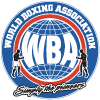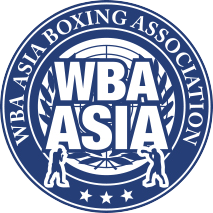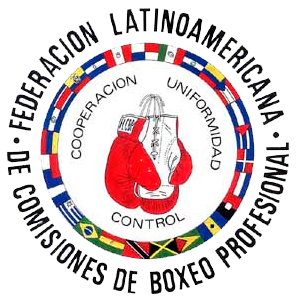|
REFEREE MANUAL INTRODUCTION This Manual was prepared with materials from all over the world of boxing. It was formulated to be applicable to the rules and principals of the World Boxing Association (WBA) and the general rules of professional boxing. Although not all inclusive, the periodic reading of this manual will assist Referees in maintaining their high level of expertise, while at the same time developing their skills. It will also give keen insight to other boxing officials so that they may better understand the difficulty of achieving greatness in this key aspect to the success of the sport of boxing. I recommend that Referees review this guide prior to every assignment. It is a sincere honor and privilege to participate in the sport of professional boxing and be a member of the WBA. Respectfully, Armando Garcia THE REFEREE What makes a good Referee? Movement and positioning, general mechanics and knowledge of the rules all complement the qualities of a Referee, but the single most important trait in a good Referee is: GOOD JUDGMENT. This is that innate ability that allows you to interpret what you are seeing and translate it into proper fair action. What does his body language say? Is he being outclassed? Is he injured and is covering it so you won’t stop the bout? When do you deduct points or disqualify? When do you stop the bout? Sound judgment will always help a Referee through these difficult situations. Development is also paramount. By development I mean that a Referee must develop his skills over time. You cannot be Refereeing at the same level today that you were years prior. What is the primary concern and what are the basic duties of a Referee? The primary concern of a Referee is to prevent unnecessary damage to the boxer’s health during the course of the bout. The Referee should be thoroughly familiar with the rules of the World Boxing Association (WBA), as well as the general rules of boxing. Additionally, a Referee’s basic duties are to enforce the rules fairly, maintain control of the bout and to interpret the rules insofar as to their applicability to the action. The Referee must never allow himself to be influenced by anyone or anything other than the actions of the boxers as they occur. MEDICAL CONSIDERATIONS FOR THE REFEREE The Referee shall undergo a complete physical examination by a certified physician annually. The results of the examination shall be forwarded to the WBA offices. Under no circumstances shall a Referee officiate in a WBA sanctioned event unless he has passed such physical. THE REFEREE’S ATTIRE AND DRESS In the ring, the Referee’s clothing should be a long sleeved light blue collared shirt with a black bow tie and black trousers. The WBA emblem will be worn on the left shirt pocket area. If a belt is worn, it should be all black. If the belt is buckled, the buckle should not be too obvious to the eye. Shoes should be all black and flat. The wearing of a black blazer outside of the ring is advisable. A clean uniform gives the perception of professionalism. Eccentricities such as different colored shoes, laces, dress shoes, tuxedo type shirts, sport or large buckled belts, etc. should always be avoided. The Referee will have a business like haircut and be clean-shaven. If he wears a mustache, it will be neatly trimmed. Beards or goatees are not advisable. POWERS OF THE REFEREE Only the Referee can stop a bout The Referee may terminate or temporarily stop a bout:
At any stage if he considers that it is too one sided If one of the boxers has sustained an injury rendering him unable to continue To admonish the boxers To administer an official warning To disqualify a boxer who fails to follow or violates the rules In the event of a knockdown, to suspend a count if a boxer deliberately fails to retire to a neutral corner indicated to him by the Referee To consult with the Ringside Physician To adjust equipment ADVICE TO THE REFEREE Read the rules of the WBA and this manual thoroughly before each assignment Practice the application of the rules in sparring sessions Attend seminars Keep physically fit and follow a clean lifestyle Be physically and mentally ready to officiate Tone up and stretch before each of your bouts Carefully watch the boxers during each round and in the intervals; keep an eye on the Ringside Physician, Seconds, Judges, and Supervisor during the intervals as well Avoid giving commands out of position Resolutely stop the bout with a proper command Consider carefully imposing an official warning Do not argue with the boxers or their seconds Strive for the best position Strive to continually improve your skills Remember, the event is the boxers, not you WORKING WITH THE RINGSIDE PHYSICIAN It is incumbent on the Referee to coordinate communications with the Ringside Physician before the bout begins. This is critical. The Referee and Physician are safety’s best partners in a bout. The Referee must know where the Physician is seated. If there are two Physicians and they are sharing duties, the Referee should consult with the Physician closest to the situation. If the Referee deems it necessary that the Physician examine one of the boxers during the one-minute rest period, he should immediately collect the scorecards at the end of the round while at the same time inform the Physician of the need to examine a boxer. The Physician should then go to the boxer’s corner and monitor the boxer during the rest period and if necessary, examine him more closely at the end of the rest period. If the Physician needs time to examine the boxer after the rest period, the Referee will call time out immediately after the bell rings to start the next round. The Referee will then assure that the boxer’s corner does not interfere with the examination and that the other boxer goes to and remains in a neutral corner. The Referee will then remain at the Physician’s side throughout the examination. Both should strive for keeping their consultation as private as possible. If during the course of the bout the Referee deems it necessary to consult with the Physician over a cut or other injury he should wait until there is a lull in the action and call time out. The Referee should usher the other boxer to a neutral corner while at the same time calling for the Physician and walking the injured boxer to him or her. Again, the Referee and Physician should strive to keep their conversation as private as possible. If the Physician recommends that the bout be stopped, the Referee should confirm the reason for the stoppage so that there is no doubt or miscommunication. The Referee will then wave the bout off and escort the boxer to his corner. The Referee will then immediately inform the bout official(s) of the specifics of the stoppage. PRE BOUT RESPONSIBILITIES Dressing Room Instructions At the world championship level boxers are expected to know both the general rules of boxing and those that govern their championship bout. With this in mind, the Referee should seize the opportunity of the one on one conversation with the boxer in the dressing room and stress key issues to them that may come up in the bout. This is not a time to recite all of the rules. Take the opportunity to be brief and firm in discussing key issues such as:
Un-sportsmanlike conduct Three key fouls: Headbutting, Low Blow and Holding Verbal Commands and Hand Signals Knockdown procedures Temporary stops of action End of the round procedure Mouthpiece procedure Again, this is the best opportunity for you to get across specific instructions to a boxer and establish what you will do and most importantly, what you expect them to do in key situations. This is a must take opportunity to establish your authority and emphasize that you will control the bout at all times. In the ring At bout time, the Referee is the first to enter the ring. He will then check: The ring once again to assure that it is safe to box in To see if there are any foreign objects in the ring or on the apron If there are any shortcomings, he will ensure that they are rectified immediately. He will stand in the neutral corner opposite the Timekeeper. The Referee will insure that: Whether the boxers’ dress conforms to the rules Whether they are wearing a cup protector and a form fitted mouthpiece Whether the gloves are in perfect condition, and that the laces are tied and covered appropriately Whether the boxers have used excessive Vaseline or any illegal substance on their bodies Whether the Commission Representative, Physician(s), Judges, Inspectors, Supervisor, Timekeeper, Knockdown Judge, and are in their respective positions and are ready Once the Referee is confident that both the ring is in excellent condition, and that the boxers and officials are ready to begin, he will stand in his corner and wait for the announcement of the boxers. Once the boxers have been announced, he will greet them in the center of the ring and give them their final instructions. These instructions should be brief, as they have already been previously instructed. Confirm your authority, establish the waistlines and reiterate any bout specific concerns. Long dramatic instructions serve no purpose and may create a circus like atmosphere. The Referee will then motion the boxers to touch gloves and order them back into their respective corners. He will then assure that everyone is in place and that no one other than he and the boxers are inside the ring. The Referee will then motion to the Timekeeper to sound the bell to begin the bout. DUTIES OF THE REFEREE DURING A BOUT After the sound of the bell, the Referee will move around the boxers in such a way that he can follow their movements. The Referee must maintain control of the bout at all times.
At the end of each round the Referee will move to his corner. From there, he will observe all activities of the boxers and their Seconds. He will also look in the direction of the bout officials in case they may wish to call to his attention the existence of faulty equipment or to provide other information to him. Movement and Positioning Basically, the Referee should move in a direction opposite to that of the boxers. It is said that the greater distance affords a better view of the boxers. However, the Referee should stay at a reasonable distance to the boxers so that he will be at hand should a dangerous situation arise. The Referee should shorten his distance in the following cases: During a difficult and tough bout When the fighting ability of one of the boxers is in doubt and a stoppage may be eminent When the boxers mainly resort to infighting When there is a good deal of noise and his verbal commands may not be easily heard At the sound of the Timekeeper signaling that ten seconds are left in the round When boxers are moving towards or fighting on the ropes In general, the Referee’s movements in the ring should be neutral, easy and calm. The Referee should always strive for the right distance between himself and the two boxers. Eccentric waving or swinging of the arms, bending at the waist, clapping, touching or holding the ropes, chewing gum, frowning, or the like, should always be avoided. Simply put, act professionally. Few fans go to an event to see the Referee. The ‘Open or Dominant Side’ When one of the boxers is a southpaw, the Referee may find it harder to move in the ring. Here again, the Referee should observe the principle of moving in a direction opposite to that of the boxers. The principal requirement, however, is that the Referee should be facing the inner or dominant side of the boxers and not be moving behind them. This position will allow the Referee to see both landing blows and their effect. Being behind the boxers will force the Referee to quicken his steps and will not allow for a good gaze of the action. The Referee should not place himself in a disadvantage by trying to remain on the open side when close to the corners of the ring. Doing so could cause erratic movement or positioning and bout interference. Verbal Commands and Hand Signals It may be necessary for the Referee to call the attention of a boxer to an infringement of the rules without having to stop the bout. Stopping the bout should only be done when absolutely necessary and or when the rules clearly call for it. If a Referee can advise the boxer, without stopping the bout, he should do so. However, calling out and or excessive stopping of the bout should be avoided. Firm, loud and concise commands are most advisable. Preferably in the boxers own language. It is understood that this is not always possible. The Referee should strive to give clear and concise commands that deal with the situation or foul. Short and succinct commands such as: ‘Time’, ‘Break’, and ‘Stop Punching’, etc. should be clearly explained during the dressing room instructions to the boxers, particularly if they speak a language other than that spoken by the Referee. That is why clear and concise commands such as: “Gonzalez, holding!” or “Johnson, low blow!” are most effective. The command of “BREAK” The command ‘Break’ may be given when there is a clinch. It is important to note that this command is used incorrectly in many cases. Following this command, both boxers should stop boxing and move one step back before continuing. Many boxers don’t do this consistently and if they do they do so with some reluctance. It is the Referee’s duty to assure that if he gives this command or orders the boxers to stop punching they are to immediately follow his commands. On most occasions when boxers don’t follow through immediately the Referee is to blame for not previously instructing the boxers, exercising his authority and or controlling the bout. Keep in mind that if the need to command ‘Break’ is necessary, as is the case in all verbal commands, it should be done firmly and in a loud voice. Repetitive commands such as, ‘Break, Break, Break, etc. should be avoided. This gives the perception that the Referee is not in control. The use of this command improperly may paralyze or minimize action and thus destroy tactical variety in infighting. Quite possibly, a verbal command, without stopping the action, is more advisable and may more quickly achieve your objective. This command may also be used when boxers are engaged in infighting and there is a danger that a headbutt may occur. However, as a general rule, if the hands are free, there is no need to call out this command or separate the boxers. Avoid touching the boxers when separating them. Give them a strong command and MAKE THEM separate themselves. After separating the boxers never walk through them as this causes you to turn your back on one of the boxers. One-Minute Rest Period At the end of each round collect the scorecards and turn them in to the appropriate bout official as soon as possible. Then take full advantage of the one-minute rest period to rest, collect your thoughts and evaluate the boxers’ condition. During the one-minute rest period the Referee will observe all activities of the boxers and their Seconds. The Referee may also look in the direction of the other bout officials in case they may wish to call to his attention the existence of faulty equipment or to provide other information to him. It is most important to note that the boxers are entitled to a full one-minute rest period after Rounds 1 to 11. Don’t allow anyone to interrupt the Seconds while they are working on their boxers. INSPECTORS The Physician and the Inspector are a Referee’s closest allies. Inspectors are the unsung heroes of the boxing official’s team. They are the least paid, yet they spend long hours at a bout card. Clearly, they play an integral part to the success of the bout and the Referee should coordinate activities with them before the bout. If a Referee does so, you will seldom see a boxer come out without his mouthpiece, loose tape or gauze, etc. During the rest period the Inspector will look for and handle these issues if they arise. The Inspector and the Referee should also establish and maintain eye contact during the rest period to communicate potentially serious issues such as the state of a boxer, illegal activities by the corner, etc. The Inspector can also provide assistance to the Referee and Physician after a bout stoppage. Thus, it is clear that it is incumbent on the Referee to utilize the Inspector to his fullest advantage so that teamwork will assure success. OUTLINE OF COMMON FOULS There are many fouls in boxing. However, the three most obvious fouls are Headbutting, Holding and Low Blows. 1. HEADBUTTING This is a very serious foul that often produces a cut and or a damaging head blow. This occurs when the head is brought forward beyond the leading foot and the gloves. The head then swings side to side or up and down without the gloves being in front. Referees are reminded that the WBA rule regarding accidental headbutts that produce a cut dictate that the Referee will instruct the Judges to deduct one point from the unhurt boxer. In the event that both boxers are cut, regardless of the severity of the cuts, the Referee will instruct the Judges to deduct one point from BOTH boxers. This action will officially document the headbutt. In the event that the headbutt was intentional, the Referee will instruct the Judges to deduct two (2) points from the unhurt boxer. At his discretion, the Referee may disqualify the offending boxer. The Referee will also take appropriate action if the hurt boxer cannot continue at that moment or later on during the bout. Referees are strongly advised to review this rule closely and follow the exact procedure to assure that not only the bout officials know their decision, but that no boxer gains an unfair advantage. Suitable hand signal: Tap the top of your head with your hand and mimic the head movement. 2. LOW BLOW/HITTING BELOW THE BELT It is critical to know that the waistline is defined as the imaginary horizontal line through the navel to the top of the hips. This is so regardless of where the boxer places his trunks and or protector cup. The Referee should establish the waistline at center ring in his final instructions. The rules state that the bout cannot end as a result of a low blow because it is deemed that the foul protector cup is sufficient to withstand any blow. However, it is clear that this is a very debilitating blow that should be admonished and at times penalized. The discretion of the Referee is paramount. Any blow that lands below the established waistline is a foul. A Referee should watch for blows that are parried and land below the belt. This is not a foul. Referees will also watch for boxers who may turn or move suddenly causing the opponent’s blow to land low. This is not a foul either. WBA rules state that a boxer that is hurt by a low blow will have up to five (5) minutes to recover. If the boxer does not resume fighting after this time period, he will lose the bout by TKO. It is advisable for the Referee to discreetly encourage the hurt boxer to resume fighting as soon as possible. A full five (5) minute stop in the action will stymie the natural flow of the bout and quite possibly affect its natural outcome. However, one should keep in mind that the boxer is entitled to the full five (5) minute recovery period if he desires it. Suitable hand signal: Point to the area where the blow landed. Then, with your hand palm up, move it upward. 3. HOLDING This is one of the most obvious poor tactics in the sport of boxing. It not only infuriates the fans, but it negates action during the bout. Therefore, it should be addressed accordingly. This foul occurs in various forms. A boxer may hold his opponent’s arms, hands, body or shoulders with either of his hands or arms. At times, the holding boxer is not to blame as when one boxer pushes or leans on his opponent and the latter loses balance and holds on. It should be noted that when one of the boxers pushes his arms underneath the arms of his opponent, does not withdraw them, and his opponent then delivers blows, the Referee should not interrupt this counter attack, but rather admonish the boxer pushing his arms underneath. Suitable hand signal: Mimic the type of holding, clenching or wrestling. 4. BLOW ON THE BACK OF THE HEAD This is very dangerous. It may occur as a result of a boxer moving irregularly or when hooks are delivered. The blow then tends to land on the back of the neck more frequently. The blow may also be given as a ‘tap’ for intimidation purposes. It is still a foul and poor sportsmanship and should be dealt with accordingly. If a boxer delivers a blow and his opponent turns at the last moment, the boxer delivering the blow should not be penalized. Boxers with poor technique also usually deliver these blows. Referees should also keep an eye for these fouls when one of the boxers is a southpaw. Suitable hand signal: With your hand, tap the back of your head. 5. HITTING ON THE BACK This is commonly referred to as a kidney punch. It is very harmful. Referees should be aware that at times the blow lands on the back and hurts a boxer by his own movement, i.e. the boxer twisting or turning his body suddenly and then being struck by a blow. Suitable hand signal: With your hand, tap the part of the back that was hit. 6. HITTING THE OPPONENT AT THE COMMAND OF BREAK, TIME, OR AT THE SOUND OF THE BELL It is important to move closer to the boxers when you are about to call Time, Break, or at the end of the round. An immediate verbal command and your presence may prevent a late hit. Again, secure a safe distance, get in a good squared position to the boxers and importantly, leave fear at home. The Referee should make a habit of consistently being in good position at the sound of the bell to end the round. Good positioning will start at the sound of the hammer signaling that there are ten seconds left in the round. Make it a habit to call out “Time!” at the end of each round and accompany this command with a hand signal. If you are in good position and there is action after the bell, both your verbal command and hand signal will promote a cease to the action. Also, your positioning and actions will be clearly seen on videotape in case there is a controversy. It is important to inform the boxers in the dressing room of exactly what you will do in these situations and most importantly, what is expected of them. Suitable hand signal: Call out Time or Break and strike an open hand with a closed fist. If at the bell, explain. 7. HITTING AN OPPONENT WHILE HE IS DOWN This is a serious harmful foul that usually occurs when an opponent is already hurt. The Referee should be aware that most times this blow comes as part of a combination of blows. Nevertheless, it is still a foul and should be immediately addressed as it may call for a deduction of points or disqualification. In this situation the Referee will immediately call “Time!” and signal to the Timekeeper to start the clock for (5) five minutes. The Referee will then notify the Supervisor and Commission Table that a foul has occurred and what he intends to do. Suitable hand signal: With your index finger point to the ground and strike an open hand with your fist. 8. TREADING ON THE TOES Although not as common as other fouls, this is a foul that can lead to an injury and it should be admonished. This usually occurs in infighting and many times it is flagrant. This may also occur as a result of boxers who use different stances. Suitable hand signal: With your index finger point to your feet and step one foot with the other. 9. STRIKING WITH THE KNEE Suitable hand signal: Touch the knee and mimic the violation. 10. HITTING/PRESSING WITH THE ELBOW OR FOREARM Suitable hand signal: With your hand, tap the elbow or forearm and move it forward slightly. 11. PULLING/HOLDING AND HITTING Suitable hand signal: Mimic the exact method of pulling/holding with one hand and strike an open hand with a closed fist. 12. PUSHING OR SHOVING OFF Suitable hand signal: Extend arms and push/shove off. 13. ATTACKING WHILE HOLDING UNTO THE ROPES OR USING THE ROPES TO BOUNCE FROM Boxers are allowed to use the ropes to move themselves from side to side. However, using the ropes to bounce from or holding the ropes and hitting your opponent are clearly fouls that should be admonished. Suitable hand signal: Tap the ropes and mimic the violation. 14. USING AN OPEN GLOVE TO COVER OR RUB THE FACE Suitable hand signal: Extend an arm and open your hand and mimic the violation. CALLING A TEMPORARY STOP There are various situations where it may be necessary to temporarily stop the action. These include: Violation of the rules Having the Ringside Physician examine a boxer Adjusting equipment, loose tape or gauze, etc. Debris in the ring Faulty ring equipment The key to stopping the action is to stop the bout at the appropriate time. That is, not interrupting the action and not giving either boxer any advantage. An efficient manner in calling a temporary stop is to: Secure a safe distance and assume a squared position to the boxers. Command in a loud firm voice, “Time!” Assure that the boxers are completely apart. Attend to the issue at hand. Call time back in. A continued infringement of the rules may require a strong admonishment of a boxer even if a point deduction is not in order. This should be done as soon as possible after an obvious harmful foul has occurred. An efficient manner in calling a temporary stop is to: Secure a safe distance and assume a squared position to the boxers. Command in a loud firm voice, “Time!” Assure that the boxers are completely apart. Stand in front of the offending boxer, without turning your back on the other boxer, and advise him of the foul. Assure that the offending boxer understood the admonishment and that both are separated and ready to continue. Call time back in. This should not be done in a condescending manner or with excessive emotion that could be construed as a lack of self-control or partiality. This action should be done firmly, clearly and quickly. ISSUING AN OFFICIAL WARNING An efficient manner in issuing an official warning with a point(s) deduction is to: Secure a safe distance and assume a squared position to the boxers. Command in a loud firm voice, “Time!” Assure that the boxers are completely apart. Usher the offended boxer to a neutral corner. Stand in front of the offending boxer, without turning your back on the other boxer, and advise him of the foul. Assure that the offending boxer understood the admonishment. Notify the Judges of the point deduction and type of foul. Call time back in. Again, this should not be done in a condescending manner or with excessive emotion that could be construed as a lack of self-control or partiality. This action should be done firmly, clearly and quickly. The Referee should carefully weigh his options when issuing an official warning as one single point deduction may decide a bout. DISQUALIFICATION The Referee should disqualify a boxer only when he has grossly infringed the rules and has committed a harmful foul(s) causing a clear advantage over his opponent. This may be a difficult decision. Unlike Olympic style boxing, a boxer should be disqualified only when it is clear that he has refused to follow the rules, has disobeyed the Referee, and or has caused harm to his opponent by his actions. MOUTHPIECE PROCEDURE If the boxer’s mouthpiece comes out as a result of natural bout action, the Referee should not penalize the boxer. Keep in mind that on occasion a boxer’s mouthpiece may become dislodged due to keeping their mouth open and or not biting down on it. When there is a loss of the mouthpiece for any reason, the Referee will wait until there is a lull in the action and then: Secure a safe distance and assume a squared position to the boxers. Command in a loud firm voice, “Time!” Assure that the boxers are completely apart. Direct the boxer whose mouthpiece has remained in place to the furthest neutral corner, while at the same time directing the boxer without the mouthpiece to his corner to have it rinsed and replaced. Retrieve the mouthpiece and have it returned to the boxer who lost it. Quickly and clearly advise the boxer who lost his mouthpiece to keep it in his mouth. Immediately direct the boxers to resume fighting by calling time in. WBA rules dictate that it is mandatory for both corners to have a replacement mouthpiece. Referees are to assure that the corners have the extra mouthpiece when they give the dressing room instructions. If a Referee uses the extra mouthpiece, the above procedures may not necessarily apply in full and or in the order outlined. If the Referee believes that the boxer spit out the mouthpiece or allowed it to come out on purpose, he shall upon the first occurrence follow the above procedures and then caution the boxer that if the same instance occurs, an official warning with a point deduction may be issued. It is up to the discretion of the Referee to issue an official warning with a point deduction in these situations. In cases where the mouthpiece continually comes out there may be no discretion, as the boxer most probably is spitting out his mouthpiece purposely to gain a perceived advantage. If the mouthpiece is spit out more than once, the Referee should deduct one point from the offending boxer. Good judgment is the key. Again, in mouthpiece expulsion situations the Referee may exercise their judgment, and, after evaluating the expulsion, take away or not take away a point. Waiting for the precise moment to stop the bout and have the mouthpiece returned to the boxer is crucial. If done too soon it could give an unfair advantage to one of the boxers. If done too late it could cost one of the boxers a serious knockout or injury. Referees should wait for a moment when both boxers have finished their combinations and have somewhat retreated. This is a judgment call on the part of the Referee. Be watchful for situations where a boxer allows his mouthpiece to come out and holds on immediately. Or, after a knockdown, the mouthpiece comes out. This may be a clear tactic to gain an advantage. This should be admonished. Common mistakes in handling mouthpiece expulsions Not calling time out Interrupting boxing to initiate the return of the mouthpiece Bending down to pick up the mouthpiece and thus interrupting your attention on the boxers Losing sight of the mouthpiece Going to the wrong corner Throwing the mouthpiece across the ring into a corner Taking too long It is advisable to follow the previously outlined steps quickly and decisively. Go over this procedure in your mind before assignments and practice it during sparring sessions. The key to success is consistently following these steps both quickly and decisively. Assure that your actions protected the boxer who lost his mouthpiece, that no one received an unfair advantage, and that boxing resumes as soon as possible. KNOCKDOWNS A boxer is deemed downed if when struck by a legal blow(s) any part other than the soles of his feet touch the canvass. He may also be considered down if he is hanging helplessly on the ropes as a result of a legal blow(s); or, if when struck by a legal blow(s) only the ropes prevented him from being knocked down. If a boxer goes down and you rule that it was not a legal knockdown, ALWAYS wave off the knockdown immediately by extending both hands and arms in front of your body at waist level and criss-crossing them. This signal is similar to the one given by a baseball umpire when calling a runner safe. Only this signal is done 2-3 times. Procedures for a knockdown Motion the boxer who scored the knockdown to the furthest neutral corner. Pick up the count from the Knockdown Judge. Position yourself so that you can focus on the downed boxer, the other boxer, and the Knockdown Judge and Timekeeper. Count aloud and succinctly while gesticulating with your hands the numbers of the count. While counting, concentrate on the downed boxer and look for signs of weakness such as position of the eyes, glassy stare, dilation of pupils, lack of steady equilibrium, bad cuts or bleeding, etc. Do not over concentrate on the boxer in the neutral corner unless he exits the corner and forces you to stop the count. Use both hands when counting six through ten. Position your hands in line with the boxer’s eyes. Do not fan, wave, etc. your hands. Do not demonstrate excessive emotion. In other words, do not over dramatize the knockdown. At the count of 8 or 9 render your critical decision. If after a knockdown and during the count, the fighter goes down again without receiving another blow, the Referee should continue the count (unless the fighter is obviously hurt and needs immediate medical attention). Safety is important, but unless the fighter is in an obviously dangerous situation, the Referee should continue his count if the fighter goes down a second time without receiving another blow. This is at the sole discretion and good judgment of the Referee. If a boxer goes down there is a mandatory 8 count. That means that even if the boxer rises to his feet the Referee must continue the count up to 8, unless the boxer needs immediate attention. If a knockdown occurs at the end of the round and the bell rings, the Referee will disregard the sounding of the bell and continue his mandatory count. EVALUATING THE DOWNED FIGHTER Concentrate. During the count examine the boxer and be ready to make a decision. When evaluating the fighter do not touch him. Be at about one arm’s length from him. If a boxer protests your stoppage take a step back from him. Do not argue with him or offer any condolences or apologies. It is a 10 count, no more and no less. Recent tendencies upon reaching the count of 8 or 9 are to talk to the downed boxer and have him walk to you. These actions make the count go well over 10 seconds. This variation from Referee to Referee and many times, from count to count, may give a boxer an unfair advantage over his opponent. Asking the downed boxer if he would like to continue and having him take a step or two towards you is surely acceptable. However, spending a longer period of time is not advisable. A well-schooled and experienced Referee is able to evaluate the boxer within the time frame that the rules dictate. It is critical to note that in bouts governed by the WBA rules three (3) knockdowns in the same round automatically end the bout by TKO. Also, WBA rules specify that the bell cannot save the fighter in ANY round. WHEN IS IT OK TO STOP A BOUT? Only good judgment and ring experience can answer this question. When to stop or not stop a bout is the most difficult and critical decision a Referee has to make in the ring. If done too fast the event is damaged completely. If done too slow the boxer could become seriously hurt or die. Although there is no descript way to teach someone to do this, there are tell tale signs that can help a Referee make his critical decision. They are: Strong fatigue Change of skin color Open mouth with heavy or poor breathing Unbalanced stance or gait Lack of muscle control Dazed look Disorientation Nausea or vomiting Claims of strong head or earache Pupillary changes Bad cuts, lacerations or swellings It is your call. Concentrate and make the decision. Don’t dwell on the ‘one you’d like to take back’. That one is over. Concentrate! DUTIES OF THE REFEREE AT THE END OF THE BOUT A beaten boxer should be immediately attended to. The joy of one boxer and the magnitude of an event should not overshadow the physical condition of a boxer. Demonstrating compassion to the beaten boxer is mandatory. Never leave a beaten boxer to tend to himself. Escort him back to his corner and remove his mouthpiece whenever possible. With this said, don’t over do it. Avoid excesses. The goal is to treat a beaten boxer with respect, not to try to steal a moment for the camera. Referees look quite ridiculous doing this. The Referee will stop a bout by Technical Knockout (TKO) when: A boxer is being outclassed A boxer is receiving excessive punishment When a boxer is unable to continue due to an injury or simply does not want to continue When the corner stops the bout When the Ringside Physician recommends that the bout be stopped If a TKO instance occurs, the Referee will go to the boxer, remove his mouthpiece and escort him to his corner. If it is necessary, he should notify the Ringside Physician and request that he or she examine the boxer. The Referee should then notify the Commission Representative and Supervisor of his decision. The Referee will stop a bout by Knockout (KO) when: A boxer has been left defenseless by a hard blow(s) even though he may not have become unconscious and the Referee reaches the count of 10 (TEN) If a KO instance occurs, the Referee will immediately summon the Ringside Physician to examine the boxer. He will stay with the boxer until he is under the care of the Physician. At the request of the Physician, he may stay and assist him or her. However, if the Referee is no longer needed, he will remove himself and immediately notify the Commission Representative and Supervisor of his decision. He may then collect the scorecards. He will then move to his corner and await the official announcement of the bout. When a bout goes the distance The Referee will collect the scorecards after each round. Do not review the scorecards. After the 12th round’s scorecards are collected, the Referee will remain in his corner until the official decision is to be announced. Pick them up quickly and give them to the Commission Representative or Supervisor. The Referee will then go to the winner and raise his hand as an official sign of the victory. CONCLUSIONS Being a professional boxing Referee is the most difficult officiating position in all of sports. You literally have someone’s life in your hands. Study and practice your trade. Don’t make excuses. You are paid to do a great job ALL of the time. If you don’t do a great job at some point, study the various scenarios that led to the deficiency and make the appropriate adjustment. On a personal note, never loose sight of the fact that we are privileged to be in the ring with the boxers. Avoid showboating. Move naturally and avoid any act that will draw unnecessary attention to your self. Do not opine on sport participants, particularly on boxers and or upcoming bouts. Live your life as a role model for the sport. On an ethical point: Don’t broker for bouts Don’t sell out, take money or other gratuities Don’t gamble in the sport Don’t backstab other boxing people Cream rises to the top. If you have a goal, set your course. If it can’t happen for whatever reason, take what is given. Set an example for other Referees by staying fit and developing your skills. Referee each bout as if it were your last. It may well be. And lastly, never forget that complacency and an over inflated ego are a Referee’s worst enemies.
|
















